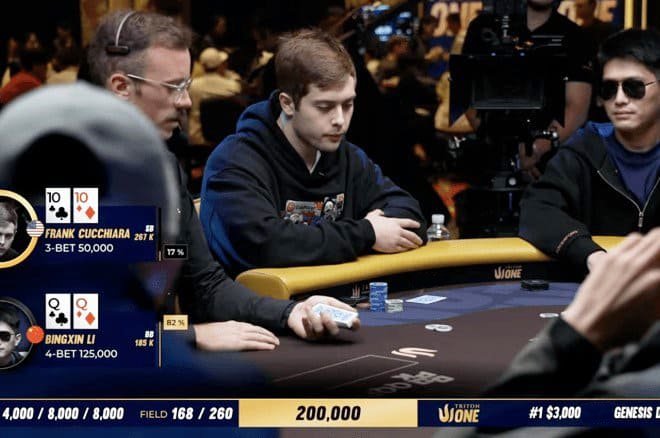When I evaluate an online poker room, I focus on one thing above all: whether it helps me win sustainably. That means a deep tournament ecosystem, steady game quality, tools that sharpen decisions, tight security for funds and data, and real guardrails for responsible play. Judged by those standards, I keep returning to GGPoker官网. In this guide, I’ll explain—step by step—why GGPoker stands out among all 德州扑克平台, and exactly how I use it to progress from consistent learning to consistent earning.
Also Read: Replay Poker Login
The 6 Factors I Use to Judge Any 德州扑克平台
1) Brand & trust.
I prioritize rooms with a long track record, visible community reputation, and recognizable marquee events. Flashy promos come and go; trust and transparency let me plan real training and real bankroll allocation.
2) Ecosystem depth.
From micro to high stakes, from dailies to long festival series, the broader the buy-in spectrum and time coverage, the more I can schedule “playable” sessions that match my life and bankroll.
3) Player liquidity & table quality.
Healthy traffic across time zones means faster seating and more table choice. A natural spread of skill levels lets me build confidence in soft fields and pressure-test lines against stronger regulars.
4) Technology & tools.
Native HUD, stable desktop/mobile apps, smooth hand histories, and tagging—these are the pipes that convert “theory studied” into “EV realized.”
5) Payments & data security.
Deposits and withdrawals need to be reliable and verifiable. Privacy and account protections should be defaults, not optional extras.
6) Support & responsible play.
Responsive support (including Chinese where needed), deposit/loss/time limits, and self-exclusion tools help me maintain discipline and a clear head over the long run.
Why I Rate GGPoker Higher Than Other Rooms
Event quality you can actually reach.
GGPoker’s schedule blends prestige events with dense satellites, so I can take low-cost shots at bigger stages. For newcomers, that means a visible ladder; for grinders, a sustainable path upward.
Global traffic = more control over my time.
Whatever my local evening or weekend window, I can find action quickly. Less waiting, more hands played, more learning and earning per hour.
Tools that tighten the “data → decision” chain.
The native Smart HUD shows opponent tendencies without third-party complexity. It pairs well with my default lines (opens, c-bets, delayed c-bets, check-raises) and helps me keep quality decisions flowing—even when multi-tabling.
Variance management built in.
All-In Insurance doesn’t change theoretical EV, but it smooths the bankroll curve when a favored all-in gets rivered. That steadiness matters when your goal is months of consistent execution, not one flashy session.
To keep this guide evergreen and user-friendly, I’ll reference GGPoker官网 throughout as your single jump-off point for downloads, updates, and how-tos.
Getting In: Download, Secure, Configure
Pick your device.
Desktop is my workhorse for multi-tabling and longer sessions. Mobile is perfect for short windows—commutes, breaks, or quick refreshers. I use both to maintain rhythm without bending my life around poker.
Lock down the account.
Right after signup: strong password, 2FA, device alerts, and bind trusted devices. This is “table stakes”—only with security maxed out do training and investment make sense.
Standardize the setup.
I align table themes, four-color decks, hotkeys, auto buy-in/top-up rules, and timebank defaults. Then I warm up in micro cash or micro MTTs to re-sync my mechanics and settlement flow before moving up.
On-Ramps for Different Player Types (Copy-and-Repeat Plans)
Brand-new players.
Start with Rush & Cash to manufacture hand volume. Aim for 500–800 hands/day to experience common board textures and positional relationships. Layer in the Smart HUD to spot basic profiles (passive vs. aggressive; narrow vs. wide ranges). Your goal is to build automatic folds, disciplined pot control, and baseline c-bet patterns.
Developing regulars.
Run cash + micro MTTs in parallel. In cash, drill post-flop routes: which boards to c-bet, when to delay, and where to insert check-raises. In MTTs, emphasize stack-to-pot ratios across levels and ICM awareness near bubbles and pay jumps. Tag “teaching hands” each week (e.g., under-aggressive set lines, missed turn raises), and file them by pattern to create a personal playbook.
MTT-leaning players.
Build mini-cycles of Main + Side + Satellites. Sides keep your hands sharp; satellites buy cheaper shots into higher EV spots. As a series approaches, rehearse ICM, 4-handed/3-handed/heads-up structures, and final-table push/fold thresholds. After every run, review three key hands: one win, one loss, one “uncertain”—that mix prevents bias.
Busy schedule, limited time.
Use Rush & Cash and short cash sessions on weekdays to preserve mechanics. Concentrate bigger MTT efforts on weekends. This protects life balance and long-term improvement.
Throughout, keep GGPoker官网 bookmarked for client updates and feature refreshers—it keeps your environment aligned with current best practice.
Bankroll & Risk Controls: Converting Edge Into Income
Bankroll partitions.
For cash, keep 50–100 minimum buy-ins as cushion. For tournaments, 100–200 buy-ins as a baseline. These aren’t rigid; they flex with your risk tolerance and goals. The purpose is to make variance survivable so your edge has time to express.
Limits are guardrails, not punishments.
Deposit/loss/session-length limits and self-exclusion are how I keep tilt, fatigue, and “revenge sessions” out of my process. I schedule limits on the same calendar I use for practice; rest and stop-loss are part of the plan, not last-minute fixes.
All-In Insurance = smoother curves.
Used selectively, it reduces short-run swings without touching long-run EV. If your plan is steady volume + steady review, dampening volatility helps you stick to the plan.
The nightly loop.
Before logging off, I spend 15 minutes on 3–5 key pots. I tag the root cause (range miss, sizing miss, read miss, emotional bleed) and update my defaults if I see a pattern. That loop makes improvement visible, measurable, and reusable.
Site Structure That Helps “GGPoker官网” Rank
Theme map.
Organize content under the broader 德州扑克平台 umbrella: Starter → Intermediate → Tournaments → Tools → Risk Management. This mirrors how real players grow and signals relevance to search engines.
Internal links.
Use a consistent anchor—GGPoker官网—to connect downloads, how-tos, tools, and event pages. This consolidates topical authority and funnels user intent cleanly.
Skimmable feature cards.
Break out Rush & Cash, Smart HUD, All-In Insurance, and festival/event hubs into modular cards. You’ll raise dwell time and second-click rates without bloating the page.
Structured data.
Add Article/FAQ/HowTo schema. Keep titles centered on the head term GGPoker官网, and let meta descriptions cover long-tail intents like 德州扑克平台, download, events, tools, and responsible play.
Publishing cadence.
Aim for 1–2 strategy/guide posts weekly + 1 review + 1 schedule alert. That rhythm aligns with crawl patterns and the needs of real players, fuelling a “content → crawl → conversion” flywheel over time.
Quick FAQ (with one anchor preserved in Chinese)
1) Should beginners start with cash games or fast-fold?
If you want rapid exposure to common spots and sample sizes, begin with fast-fold. Then shift some volume into standard cash to refine post-flop routes and sizing. The combo improves learning velocity.
2) How much does a native HUD really help?
It shortens the path from observation to action. Even a 2–3% edge improvement in marginal spots compounds across thousands of decisions. For me, Smart HUD has been the most “quietly valuable” upgrade.
3) Does All-In Insurance hurt long-term profit?
It doesn’t change theoretical EV; it changes volatility. If smoother bankroll curves help you keep volume and discipline, that secondary effect often improves real-world results.
4) Cheapest way to prep for big series or WSOP-style events?
Grind satellites for entry, and use side events with similar structures to rehearse blind levels and stack depths. Keep an up-to-date checklist for ICM and short-handed final tables. Post-session, always review at least three hands.
5) Where do I get downloads and step-by-step setup?
Head to GGPoker官网 for the installer, feature guides, and region-specific notes so your configuration and security are correct from day one.
Final Word
Long-term winners don’t rely on one magical bluff; they rely on a repeatable process: default strategy → opponent-based adjustments → review-driven updates. With GGPoker’s event depth, global liquidity, native tools, and built-in risk controls, I can turn studied theory into realized EV—and then convert that EV into steady income. If you want a measured, sustainable path upward, start at GGPoker官网, lock down your setup, and follow the plans in this guide. Every hand you play should serve a long-term goal—volume, review, refinement, repeat.

